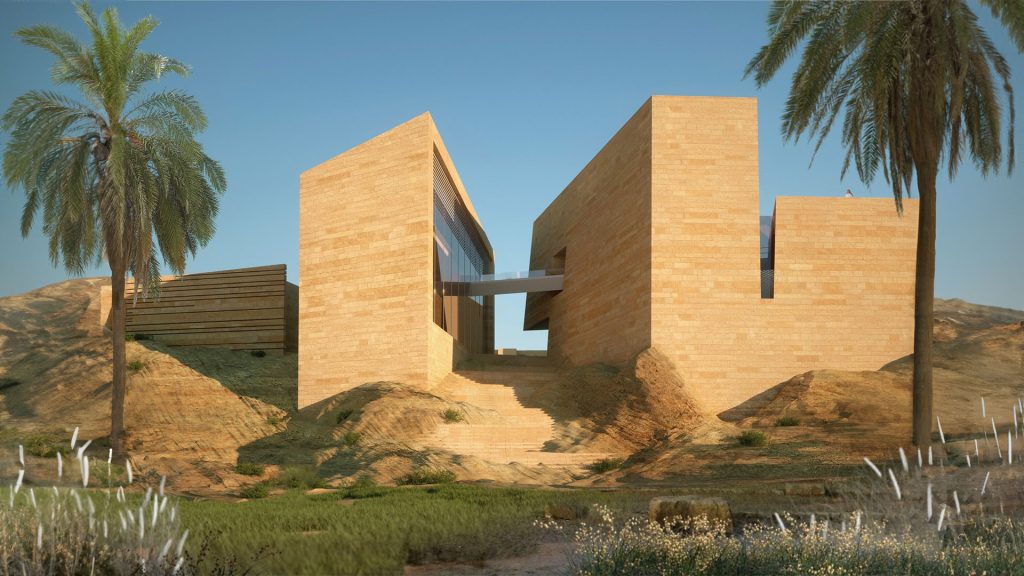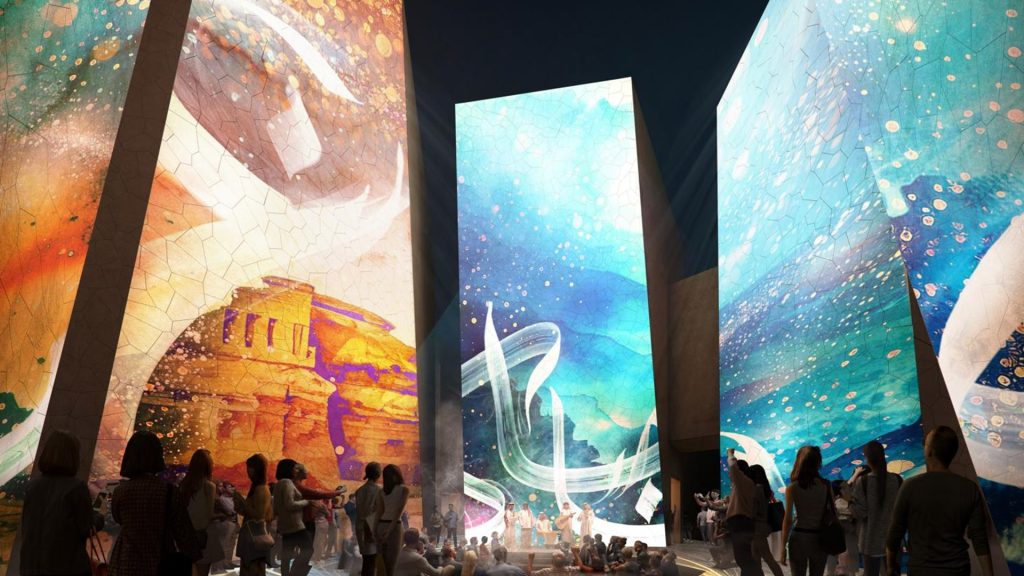Table of Contents
Introduction
Embark on a captivating journey through time and design as we unravel the intricate tapestry of Saudi Arabian architecture. From ancient wonders rooted in history to the cutting-edge visions of tomorrow, this blog traces the evolution that has shaped, and continues to shape, the architectural landscape of Saudi Arabia.
Ancient Wonders: Architectural Marvels of Saudi Arabia’s Past
Saudi Arabia’s ancient architectural landscape is a treasure trove of historical marvels, each structure a testament to the craftsmanship and profound cultural significance of its era. From the Nabatean city of Al-Hijr, a UNESCO World Heritage site, to the intricate mud-brick fortresses of Najran, these structures stand as living chronicles of the region’s diverse history.
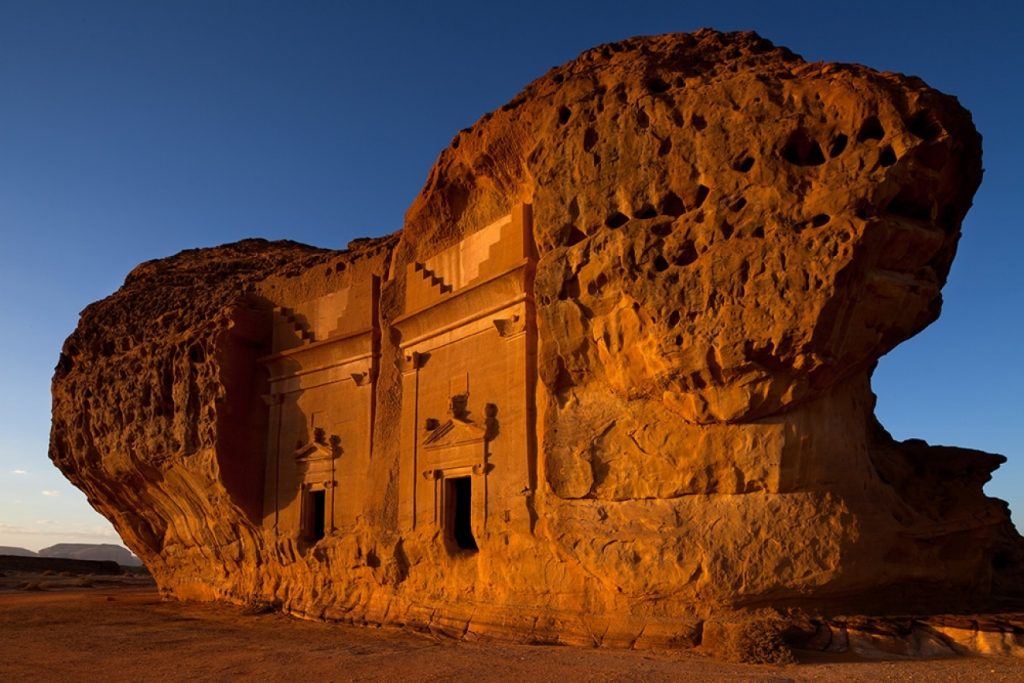
The craftsmanship is evident in the intricate carvings, geometric patterns, and meticulous detailing that adorn these edifices. More than mere structures, these architectural gems resonate with the cultural identity of the people, reflecting their values, traditions, and societal norms. As custodians of centuries-old knowledge, these buildings weave narratives of trade, religion, and community. Exploring the ancient architecture of Saudi Arabia is a journey through time, a profound appreciation for the hands that shaped these wonders and the cultures that thrived within their walls.
Islamic Heritage: Influence on Saudi Arabian Architecture Styles
Islamic architecture has left an indelible mark on Saudi Arabian buildings, embodying a profound influence evident in design principles and motifs. Intricate geometric patterns, arches, and calligraphy grace mosques and palaces, serving as visual echoes of the region’s deep connection to cultural and religious roots.
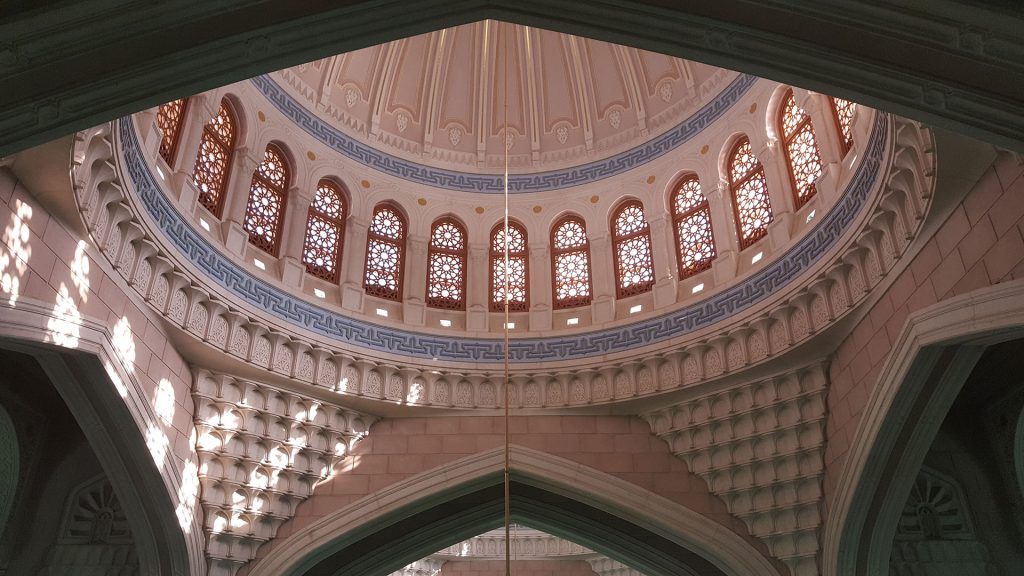
The interplay of light and shadow in courtyards, characteristic of Islamic design, evokes a spiritual ambiance. Saudi Arabian architecture’s alignment with Islamic aesthetics underscores a shared identity and a reverence for tradition. The use of domes and minarets not only showcases a commitment to Islamic architectural vocabulary but also symbolizes a connection to the divine.
In essence, Saudi Arabian buildings stand as living embodiments of Islamic artistry, where each structure narrates a story of faith, heritage, and the enduring influence of a shared cultural and religious heritage.
Cultural Crossroads: Blending Architectural Influences Throughout History
Saudi Arabian architecture serves as a captivating canvas, exhibiting a fusion of styles from diverse civilizations, notably influenced by the Ottoman and Mamluk periods. The intertwining of these influences has transformed the nation’s architectural landscape into a harmonious blend of design elements, reflective of its historical crossroads.
Ottoman architecture’s grandeur and use of domes seamlessly integrate with Mamluk intricacies in Saudi structures. The majestic arches and ornate detailing seen in buildings, such as the historic Jeddah Old Town, illustrate this amalgamation.
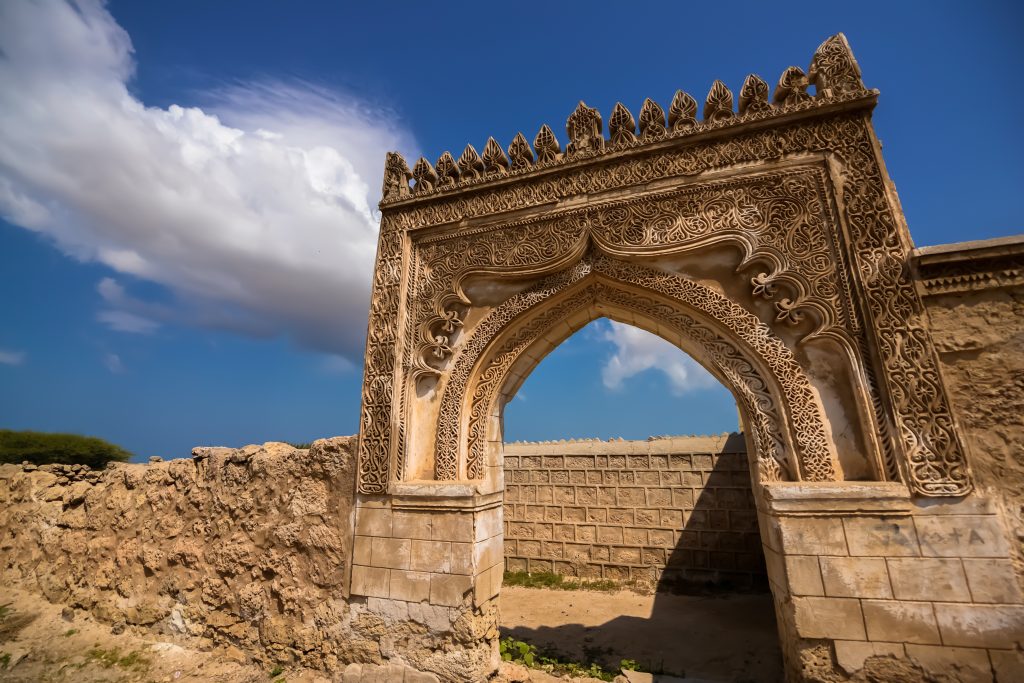
This cultural synthesis is not confined to aesthetics alone but extends to the very essence of Saudi architectural philosophy. The ornamental craftsmanship mirrors a dialogue between civilizations, where each embellishment tells a story of trade, exchange, and coexistence. From the intricate carvings reminiscent of Mamluk artistry to the geometric patterns reminiscent of Ottoman precision, Saudi Arabia’s architectural identity has become a testament to unity in diversity.
In this melting pot of influences, Saudi Arabia’s buildings transcend time, showcasing resilience in adaptation and a celebration of the rich tapestry woven by various civilizations. This architectural symphony serves as a living testament to the interconnectedness of cultures, illustrating how Saudi Arabia’s built environment is a testament to the shared history and collective heritage of civilizations past and present.
Traditional Techniques: The Enduring Charm of Saudi Arabian Vernacular Architecture
The enduring charm of traditional Saudi Arabian architecture lies in its deep-rooted connection to the region’s culture and climate. Constructed with locally sourced materials, such as mud bricks, coral stones, and palm wood, these buildings embody a sustainable ethos, adapting seamlessly to the desert environment.
The courtyard-centric design, seen in structures like the mud-brick homes in Rijal Alma’a, not only provides privacy but also shields against the intense sun, showcasing a thoughtful response to the arid climate.
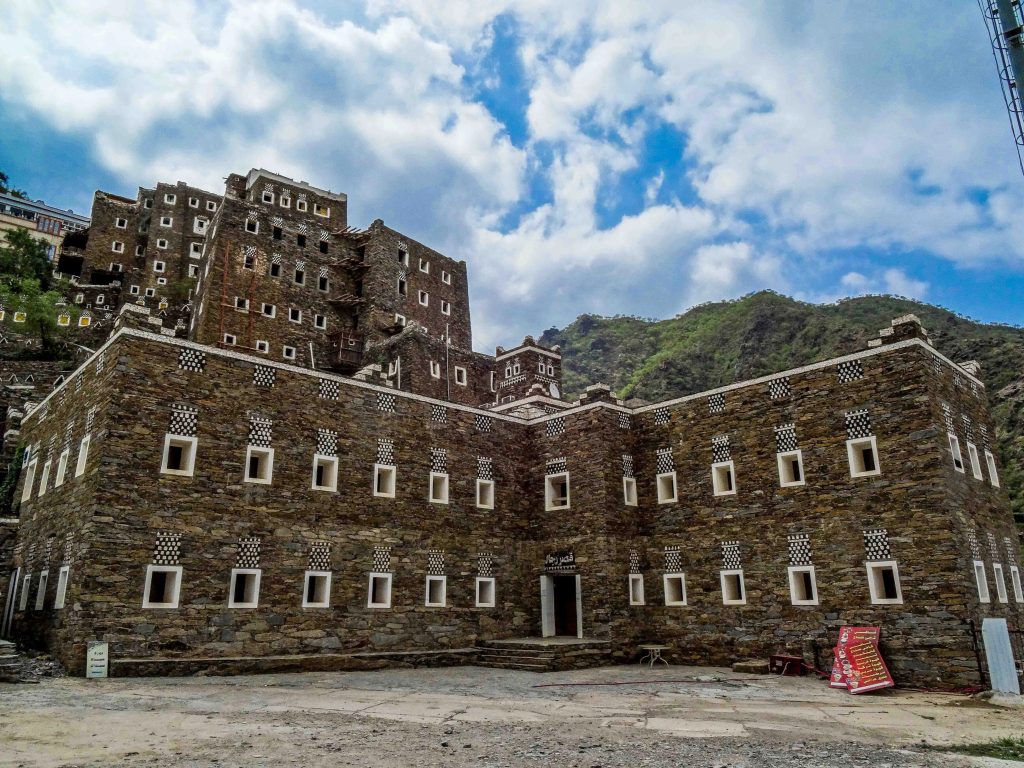
Intricate wooden latticework known as ‘mashrabiya’ adorns windows, offering ventilation and privacy while casting captivating shadows. The traditional ‘qasaba’ architecture, seen in Najran’s ancient fortresses, features massive walls and watchtowers, exemplifying a defensive yet aesthetically rich approach. Moreover, the iconic wind towers, or ‘barjeel’, showcase ingenious passive cooling techniques.
These architectural features are not just aesthetic choices but functional responses to the challenges posed by Saudi Arabia’s climate. The enduring appeal of traditional Saudi Arabian architecture is rooted in this marriage of form and function, where each element serves a purpose, creating a sustainable and culturally rich built environment that continues to inspire contemporary designs in the region.
Modern Icons: The Changing Skyline of Saudi Arabian Cities
The modern era has witnessed a transformative skyline in Saudi Arabia, marked by iconic skyscrapers and architectural marvels that redefine the nation’s urban landscape. Riyadh’s Kingdom Centre Tower, with its bold design and sky bridge, stands as a symbol of modernity and sophistication, echoing the nation’s progress. The King Abdullah Financial District in Riyadh further showcases cutting-edge architecture, featuring sleek towers and futuristic designs that embody economic vitality.
Jeddah’s skyline is punctuated by the Jeddah Tower, poised to be one of the world’s tallest structures upon completion, representing architectural ambition on a global scale. The striking Abraj Al Bait Towers in Mecca seamlessly blend modernity with cultural significance, housing luxury hotels and a massive clock tower that dominates the skyline.
These architectural achievements transcend mere functionality; they are statements of Saudi Arabia’s global presence and commitment to innovation. The King Fahd Fountain in Jeddah, for instance, is not just an engineering feat but a cultural landmark. The urban landscape, once defined by traditional structures, now showcases a fusion of tradition and modernity, illustrating the nation’s embrace of contemporary architectural excellence as it propels into the future.
Vision 2030: Revolutionizing Architecture for a Progressive Future
Saudi Arabia’s Vision 2030 serves as a visionary catalyst, propelling the nation towards a future where architecture harmonizes with innovation and sustainability. Ambitious projects, such as NEOM, a futuristic city aspiring to be a global hub for innovation, showcase a commitment to pushing the boundaries of architectural design. The Red Sea Project, an eco-friendly luxury tourism development, exemplifies sustainable architecture in action, emphasizing conservation and low-impact design.
Vision 2030 places a strong emphasis on revitalizing historic areas, like Diriyah, blending heritage with modernity. Initiatives like the Qiddiya entertainment city aim to create spaces that cater to diverse lifestyles, fostering community engagement and cultural enrichment. The King Salman Park in Riyadh, set to be one of the world’s largest urban parks, reflects a dedication to green spaces and a high quality of life.
In essence, Vision 2030 is not just a blueprint for economic diversification; it’s a transformative force shaping Saudi Arabian architecture. It envisions a landscape where innovation and sustainability coalesce, fostering a built environment that not only meets the needs of the present but also lays the foundation for a dynamic and sustainable future.
Sustainability in Design: Green Architecture and Environmental Consciousness
Saudi Arabian architecture is undergoing a profound shift towards sustainability, marked by a surge in eco-friendly designs and initiatives that champion environmental stewardship. The King Salman Renewable Energy Initiative underscores this commitment, seeking to harness clean energy sources. Architectural projects, such as the King Abdullah Petroleum Studies and Research Center, exemplify energy-efficient designs with advanced technological integration.
Green building standards, like the Estidama-inspired Saudi Green Building Forum, are gaining prominence, emphasizing sustainable construction materials and practices. The King Salman Park in Riyadh incorporates extensive greenery and water features, fostering biodiversity and providing recreational spaces for the community.
Vision 2030’s emphasis on sustainability is further realized in the development of the futuristic NEOM city, designed with ecological balance in mind. These endeavors not only address environmental challenges but also signify a collective commitment to building a future where Saudi Arabian architecture and nature exist in harmonious coexistence, setting a precedent for a globally conscious approach to urban development.
Architectural Futurism: Imagining the Next Chapter in Saudi Arabian Design
Saudi Arabia’s architectural future is poised at the intersection of innovation and technology, with visionary concepts redefining the landscape. Vertical urbanism is emerging, with designs envisioning multi-use skyscrapers that integrate residential, commercial, and green spaces. The utilization of smart city technologies, from energy-efficient systems to advanced infrastructure, is becoming pivotal in enhancing sustainability.
The fusion of traditional and modern aesthetics, as seen in the King Salman Complex in Diriyah, points toward a harmonious coexistence of heritage and innovation. Moreover, the incorporation of 3D printing in construction, exemplified by the Addiriyah Contemporary Art Center, showcases a pioneering approach to building techniques.
As the nation embraces drone technology for surveying and monitoring, the role of artificial intelligence in architecture is becoming more pronounced. This forward-thinking approach signifies Saudi Arabia’s commitment to being at the forefront of architectural innovation, where technology not only shapes structures but also propels the nation into a dynamic and sustainable urban future.
Conclusion
In the symphony of Saudi Arabian architecture, the past harmonizes with the future, creating a narrative of resilience, cultural richness, and innovative vision. As we conclude our exploration, the evolving tapestry reflects a continuum – bridging tradition and modernity – an architectural odyssey that mirrors the nation’s dynamic spirit and enduring legacy. We hope you enjoyed this journey through Saudi Arabian architecture. If you have any questions or comments, please feel free to contact us. We would love to hear from you!


